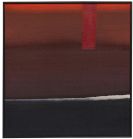
Concrete Art
The concept "concrete art", or in French, "art concret", was brought into language about art consciously in 1924 by Theo van Doesburg as the opposite of "abstract art".
"Concrete art" does not of course mean figurative art; by the term "concrete" is meant rather an art that is not abstract in the sense that that it does not abstract or distort natural models. In this way, concrete art differentiates between abstract and immaterial art. Concrete art means much more an art that is based on lines, surfaces and colors and that for the most part follows a clear geometric principle. For this reason, important art-historical preconditions were "de Stijl" and "Bauhaus". Concrete art materializes the mental, but does not have any kind of symbolic meaning. "Painting is a means of realizing thoughts in an optical way", is how Doesburg explained it. Max Bill wrote in 1947: "The goal of concrete art is to develop objects for mental use, the same way people make objects for material use. (...) Concrete art, as a last consequence, the pure expression of harmonious measure and law." In addition to the group, van Doesburg published the journal Art concret in 1930. Concrete art had an important influence on Colour Field Painting and on Op Art.
Related artists: Albers, Josef | Antes, Horst | Bayer, Herbert | Bill, Max | Bissier, Julius Heinrich | Bonalumi, Agostino | Calderara, Antonio | Cruz-Diez, Carlos | Dorazio, Piero | Fleischmann, Adolf Richard | Fontana, Lucio | Fruhtrunk, Günter | Förg, Günther | Gaul, Winfred | Geiger, Rupprecht | Girke, Raimund | Hauser, Erich | Kippenberger, Martin | Knoebel, Imi | Lanskoy, André | Luther, Adolf | Mack, Heinz | Mavignier, Almir da Silva | Morellet, François | Pfahler, Georg Karl | Piene, Otto | Roth, Dieter | Uecker, Günther | Vasarely, Victor

Would you like to sell a work of Concrete Art?
Infos for seller



